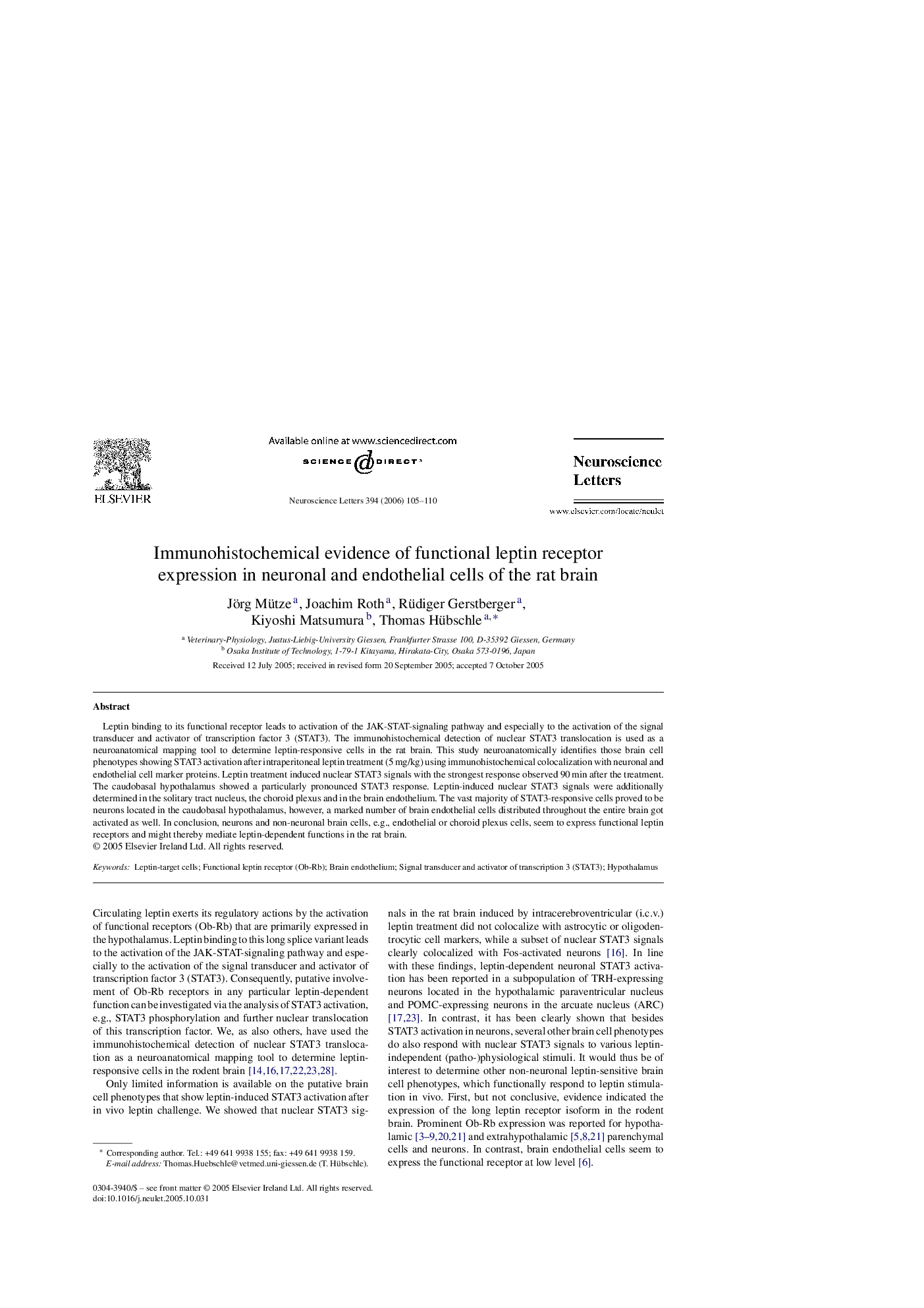| Article ID | Journal | Published Year | Pages | File Type |
|---|---|---|---|---|
| 4351081 | Neuroscience Letters | 2006 | 6 Pages |
Leptin binding to its functional receptor leads to activation of the JAK-STAT-signaling pathway and especially to the activation of the signal transducer and activator of transcription factor 3 (STAT3). The immunohistochemical detection of nuclear STAT3 translocation is used as a neuroanatomical mapping tool to determine leptin-responsive cells in the rat brain. This study neuroanatomically identifies those brain cell phenotypes showing STAT3 activation after intraperitoneal leptin treatment (5 mg/kg) using immunohistochemical colocalization with neuronal and endothelial cell marker proteins. Leptin treatment induced nuclear STAT3 signals with the strongest response observed 90 min after the treatment. The caudobasal hypothalamus showed a particularly pronounced STAT3 response. Leptin-induced nuclear STAT3 signals were additionally determined in the solitary tract nucleus, the choroid plexus and in the brain endothelium. The vast majority of STAT3-responsive cells proved to be neurons located in the caudobasal hypothalamus, however, a marked number of brain endothelial cells distributed throughout the entire brain got activated as well. In conclusion, neurons and non-neuronal brain cells, e.g., endothelial or choroid plexus cells, seem to express functional leptin receptors and might thereby mediate leptin-dependent functions in the rat brain.
